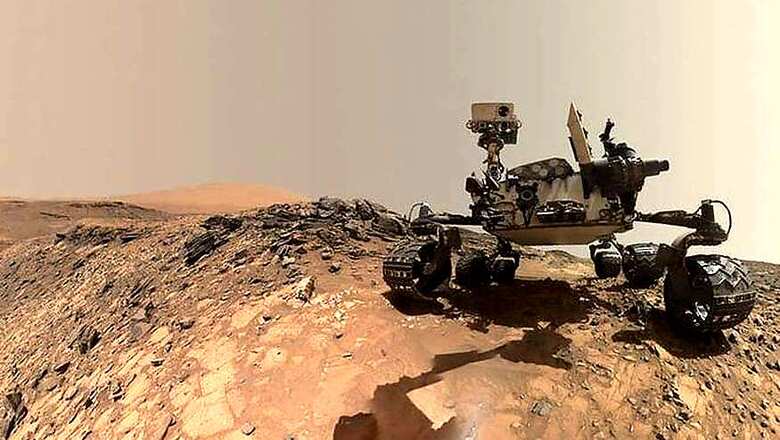
views
NASA's Curiosity rover which found that ancient Mars had the right chemistry to support living microbes is marking five years of exploring the Red Planet. The rover, which landed at the Gale Crater -- an ancient lake -- is now examining clues on Mount Sharp, the mountain found in the middle of the crater, about long-ago lakes on Mars. On August 5, 2012, the mission team at NASA's Jet Propulsion Laboratory in Pasadena, California, exalted at radio confirmation and first images from Curiosity after the rover's touchdown using a new "sky crane" landing method, NASA said. Transmissions at the speed of light took nearly 14 minutes to travel from Mars to Earth, which that day were about 248 million kilometres apart. Those first images included a view of Mount Sharp.
The mission accomplished its main goal in less than a year, before reaching the mountain. It determined that an ancient lake environment on this part of Mars offered the conditions needed for life -- fresh water, other key chemical ingredients and an energy source. On Mount Sharp since 2014, Curiosity has examined environments where both water and wind have left their marks.
The rover has driven a little more than 17 kilometres in five years, but having studied more than 600 vertical feet of rock with signs of lakes and later groundwater, Curiosity's international science team concluded that habitable conditions lasted for at least millions of years. With higher destinations ahead, Curiosity will continue exploring how this habitable world changed through time, NASA said.
Watch: Blackberry KEYone First Look




















Comments
0 comment